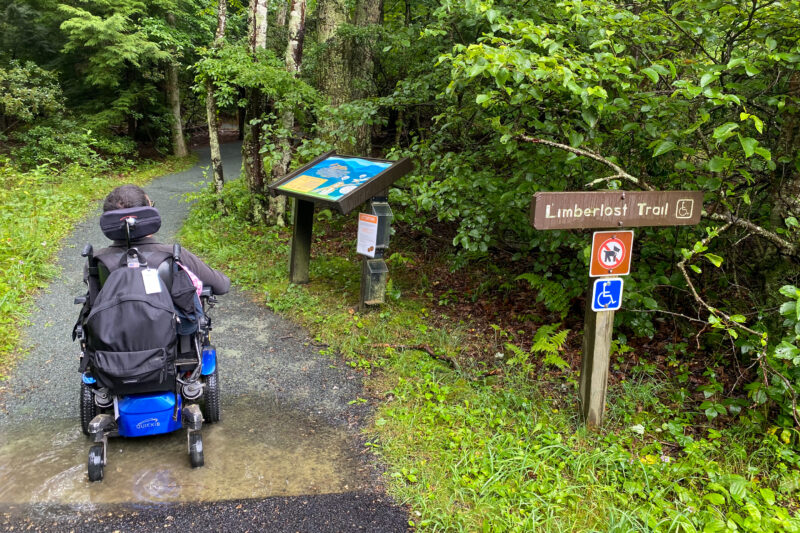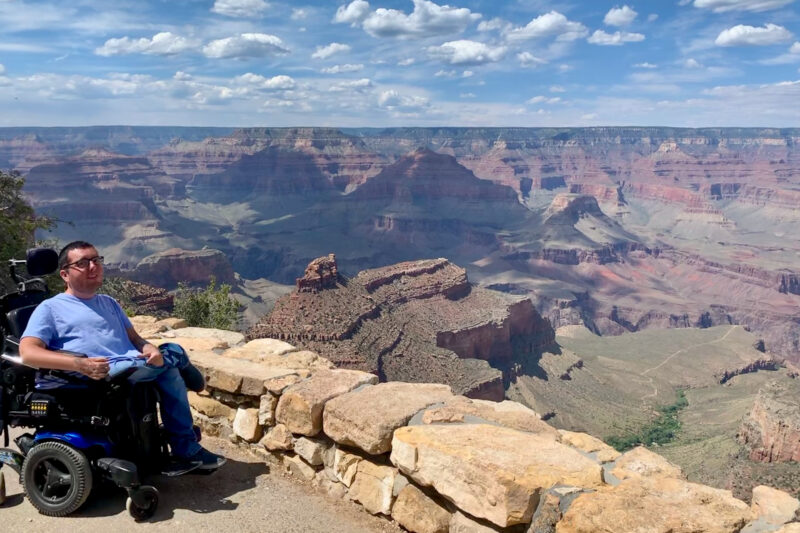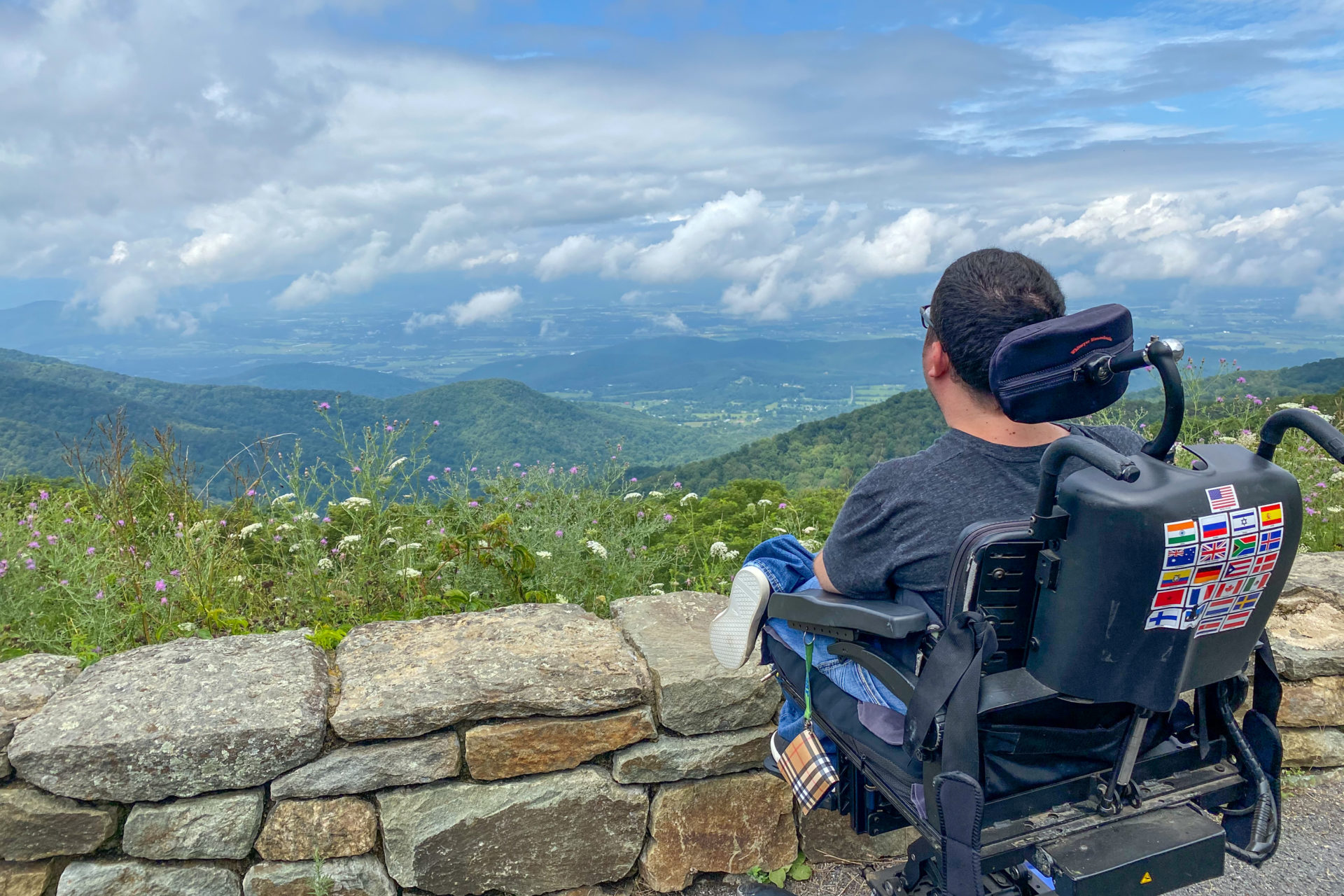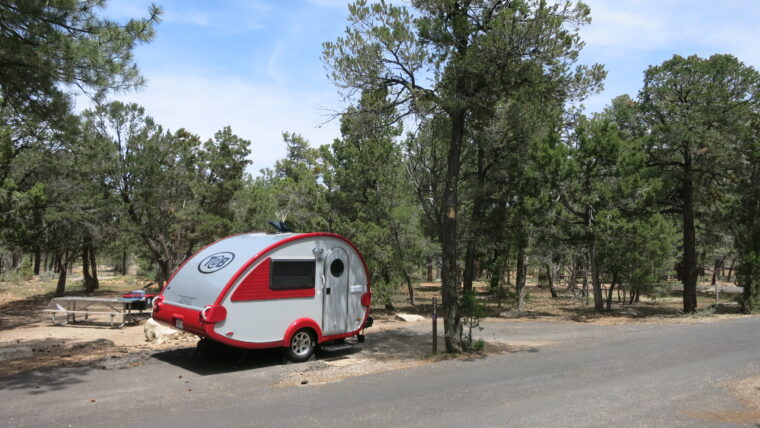U.S. national parks provide access and opportunity to enjoy the great outdoors, which can thankfully be enjoyed by people of all abilities. Whether you’re a wheelchair user yourself or your family member is, this list of accessible national parks is for you.
Dust off those wheels and get ready for an epic adventure across five of the most wheelchair-accessible national parks in the U.S.
How National Parks are Addressing Accessibility Challenges

1. Great Smoky Mountains National Park
Located in the southeastern U.S., the Great Smoky Mountains are absolutely beautiful and full of southern charm. The Smokies span across the Tennessee and North Carolina. Maneuvering a wheelchair on mountainous terrain can sometimes be tricky, but not here.
Tucked inside the curvy roads near Gatlinburg, Tennessee, is the Sugarlands Valley Nature Trail. This trail is paved, flat, and smooth with wheelchair accessible parking at the entrance. It is a 0.5-mile loop through the forest and runs alongside Little Pigeon River. The sounds of the water as you roll the easy path are soothing and there are plenty of photo ops along the way.
While not as accessible as Sugarlands Valley Nature Trail, the Little River Trail is not paved, but it is fairly smooth and flat for the first mile. You can find it near the Elkmont Campground.
If you prefer to stay inside your vehicle instead of immersing yourself in the elements on the trails, the Smokies also offer Cades Cove and Roaring Fork Motor Nature Trail. Both allow you to drive through the mountains while viewing nature and wildlife from the comforts of your own vehicle. If you’re lucky, you may even see a bear—or several. Expect these leisurely drives to take a minimum of 2 hours, as they’re often busy and have congested traffic.
2. Acadia National Park
Found in northern Maine, Acadia National Park is home to wheelchair-accessible carriages and a 45-mile carriage road system. If the carriage ride is not for you, another option is just strolling along in your wheelchair for as far as your battery or arms can roll. The beauty here never ends. Located along the coastline of the Atlantic Ocean, Acadia has wheelchair-accessible beaches and accessible trails across its 47,000 acres, which are home to bears, moose, whales, and many species of seabirds.

3. Shenandoah National Park
With more than 200,000 acres of protected lands—home to more bears, deer, and bird species than you can count—Shenandoah National Park is an outdoor oasis in Virginia. This stunning park has only one public road, Skyline Drive, that runs 105 miles along the crest of the Blue Ridge Mountains. Skyline Drive has 69 scenic overlooks and 25 percent of them have wheelchair-accessible parking spots. If you drive the entirety of Skyline Drive, it may take you around 3 hours to complete, depending on how many times you stop, get out, and take in the breathtaking views.
How to Plan an Accessible Family Road Trip
If you want to get your wheels rolling, Limberlost Trail is a 1.3-mile loop near Syria, Virginia. The fully-accessible trail is flat, smooth, and consists of crushed stone. You can also enjoy rolling along Rose River Trail in Shenandoah National Park. The first mile of the dirt road is a bit bumpy, but hang in there because seeing the Dark Hollow Falls at the end will make it all worth it. Most wheelchairs, especially powered wheelchairs, should be able to navigate this trail with relative ease.

4. Grand Canyon National Park
Located in Arizona, the Grand Canyon is exactly as its name suggests—indescribably grand. Roll up to the edge of the South Rim—the most accessible viewing area—and be prepared to be amazed.
Along the South Rim, wheelchair-accessible shuttle buses run from the visitor center to viewpoints and trails. There are also several shops here that you can easily roll into and pick up a souvenir. Accessible restrooms are located at the visitor center as well. Starting from the South Rim’s visitor center is a 1.5-mile wheelchair-accessible trail called Pipe Creek Vista. Along this trail, there are more jaw-dropping views of the canyon, so don’t forget your camera.
5. Great Sand Dunes National Park
The biggest attraction at Colorado’s Great Sand Dunes National Park is the naturally-occurring sand dunes. The park’s visitor center has a limited number of sand wheelchairs for loan. You are also able to reserve a sand wheelchair in advance by calling (719) 378-6395. The sand wheelchairs have large, inflatable tires and will require an assistant to push the chair. Although the chairs do roll on the sand, the loose sand of the dunes can make it more difficult to push than the hardened sand around the walkways. So, you may want to bring a friend with good strength and stamina, so you can both enjoy the day.
Although all national parks are striving to be accessible for everyone, some parks are better than others at providing more options for accessibility. You should be able to find lots of accessibility and enjoyment at each of these five parks.





